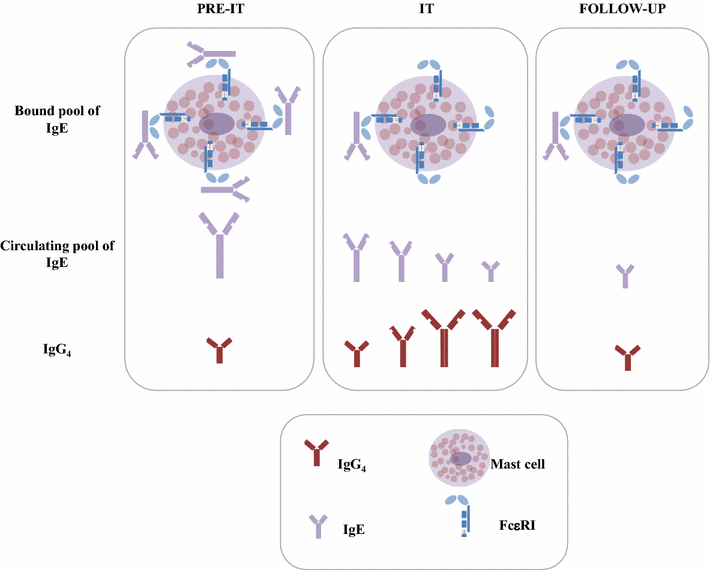A 13-year real-life study on efficacy, safety and biological effects of Vespula venom immunotherapy
- PMID: 29375272
- PMCID: PMC5774115
- DOI: 10.1186/s12948-017-0079-y
A 13-year real-life study on efficacy, safety and biological effects of Vespula venom immunotherapy
Abstract
Background: Hymenoptera venom immunotherapy (VIT) is a clinically effective treatment. However, little is known about its long-term clinical efficacy and biological effects. Several mechanisms have been proposed to account for VIT efficacy, including reduction of specific IgE and induction of allergen-specific IgG4, but the overall picture remains elusive. We investigated Vespula VIT clinical efficacy up to 8 years after discontinuation and the kinetics of Vespula-specific IgE and IgG4. Out of 686 consecutive patients we retrospectively selected and analysed a series of 23 patients with Vespula allergy that underwent a 5-year IT course, followed by a prolonged follow-up.
Methods: Clinical efficacy of VIT was assessed as number and severity of reactions to Vespula re-stinging events. The presence of Vespula-specific IgE and IgG4 was also monitored over time.
Results: During the VIT treatment, patients were protected, reporting no reactions or mild reactions in occasion of re-stinging events. This protection was entirely maintained during the follow-up, up to 8 years. Skin reactivity (reflecting mast cell-bound Vespula-specific IgE) and circulating Vespula-specific IgE levels declined substantially during VIT. Notably, this reduction was maintained over time during the follow-up. Moreover, all the patients were analysed for IgG4. A robust induction of Vespula-specific IgG4 was observed during the VIT course, with a substantial decline during the follow-up.
Conclusions: We conclude that Vespula VIT is a clinically effective treatment, which induces long-term protection after discontinuation. The reduction of specific IgE, assessed by skin tests and RAST, closely matches the VIT- induced protection, while the IgG4 induction seems not to be associated with VIT clinical efficacy in the long term.
Keywords: AIT; Allergen immunotherapy; Hymenoptera venom allergy; Long-term efficacy; VIT; Venom-specific IgE; Venom-specific IgG4.
Figures




References
LinkOut - more resources
Full Text Sources
Other Literature Sources

